
The Sierra Designs Convert 3 is a freestanding three-person tent that’s strong enough for four season winter camping and backpacking, but can also re-configured for three season use in less demanding conditions. It has a large main compartment and two vestibules, which make it a spacious, but lightweight winter tent with plenty of covered gear storage. Weighing in at 6 lbs 8 oz, fully configured, there are a number of different ways to configure the tent based on your needs. For example, you can remove the front vestibule to bring the tent weight down to 5 lbs 6 oz, making it easier to carry on winter backpacking trips. In dry desert environments, you even leave the rain fly and front vestibule at home and reduce the tent weight to 3 lbs 10 oz. The bottom line is that you get a lot of tent for your money with the Convert 3.
Specs at a Glance
- Type: Double-wall
- Freestanding Yes
- Seam-taped: Yes
- Poles: Yunan UL aluminum
- Doors: 2
- Vents: 0
- Peak height: 45″
- Floor Dimensions: 84″ x 69″ (head end) x 59″ (foot end)
- Interior Area: 40.3 cubic feet
- Vestibule Area: 19.6 (front, optional) and 9.4 (rear) cubic feet
- Min weight, with front vestibule 6 lbs 8 oz
- Min weight without front vestibule: 5 lbs 6 oz
- Fly: 28.4 oz
- Inner: 36.7 oz
- Main Tent Poles (2): 21.8 oz
- Optional Front Vestibule: 11.9 oz
- Optional Front Vestibule Pole: 5.4 oz
- 14 stakes: 4.8 oz
- Pole bag: 0.6 oz
- Tent bag: 2.2 oz
- Minimum stakes required to pitch: 5
- Materials
- floor: 68D 210T poly ripstop DWR 2000 mm PeU
- body: 20D poly riptstop DWR
- fly: 20D nylon ripstop, silicone/1200 mm PeU
- mesh: 15D Nylon no-see-um mesh
Architecture
The Convert 3 is a tunnel tent with two end vestibules. This design provides occupants with near-vertical sidewalls and more headroom than a wedge-shaped tent with steeply angled sidewalls. The Convert 3 is also freestanding, which makes it much easier to set up on snow and sandy soil because the tent is self-supporting. You’ll still want to stake out the tent when it’s erected to fully expand its interior and anchor it against the wind. This is one of the chief advantages of a freestanding tent in winter conditions because you don’t have to wait for snow stakes, also called deadmen, to freeze in place before you can set up the tent. This lets you get in the tent more quickly and change out of wet or damp baselayers, so you can warm up.
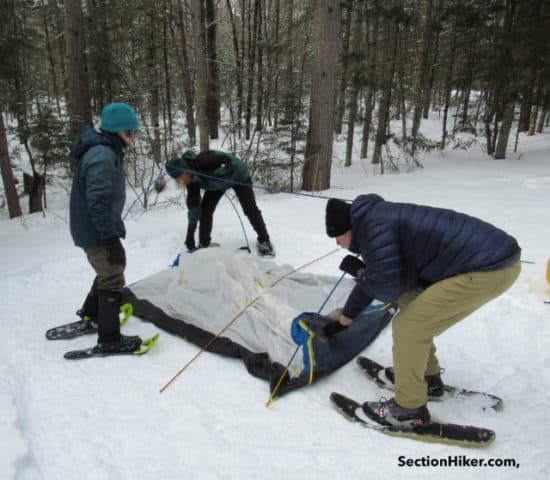
Having two vestibules and two doors is a huge luxury on a winter tent, even more so since the Convert is so lightweight. Having a front door and back door also make it easier for occupants to come and go at night, while the vestibules add significant additional covered storage, close to 75% more, by volume. For instance, the main part of the Convert 3 where people sleep has 40 cubic feet of room, while the front vestibule adds 19.6 cubic feet, and the rear vestibule adds 9.4 cubic feet. That added space provides valuable room for gear storage and even cooking or melting snow, in challenging weather conditions.
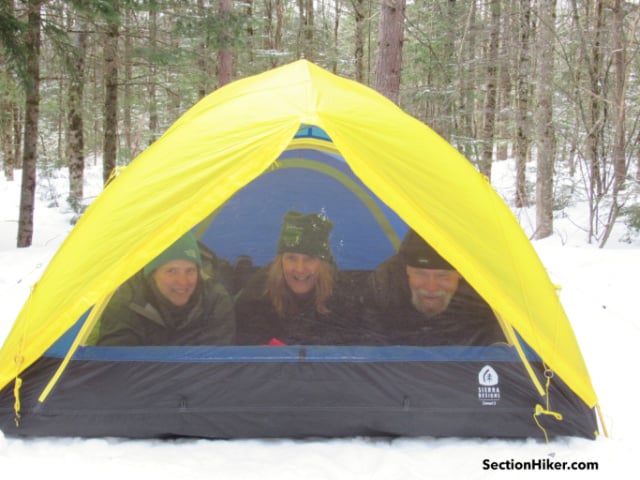
Pitching the Tent
Setting up the Convert 3 is fairly easy, despite its large footprint, and one person can pitch the tent by themselves in fair conditions. Two people are needed if it’s windy, raining, or snowing because the tent body and fly can become large sails if they catch the wind. The only really awkward thing about the setup process is wrestling with the long ridge pole which is connected by hubs to two perpendicular poles for the front and rear ends. Once the poles have been anchored into their color-coded corner connectors, it’s a simple matter of inserting the middle support pole, walking around the tent, and clipping all of the inner tent hooks to the pole structure.
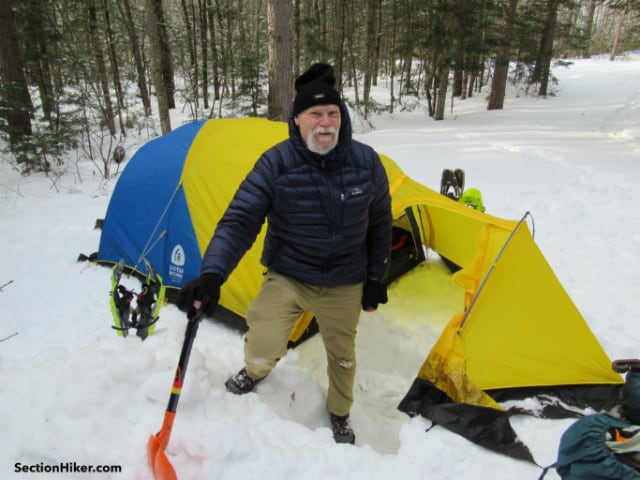
The fly is then draped over the pole structure, attached to the short awning overhangs over the front and rear doors, and then attached to the corner and side pole feet. The fly’s guy-out points have line-loc tensioners, but they’re difficult to tension when the guy line cordage is wet and frozen. This can require that you remove your gloves to fiddle with them, which isn’t optimal in winter because wet hands can quickly become frostnip or worse.

You can pack the tent away with the front vestibule pre-attached or zip it to the main tent in camp. It has its own pole and a side door. I find it convenient to dig out half of the vestibule in snow because it makes it easier to get into and out of the tent, while still providing a place to store backpacks undercover. If you decide not to use the front vestibule. the front door of the inner tent is waterproof and protected overhead by a short awning.
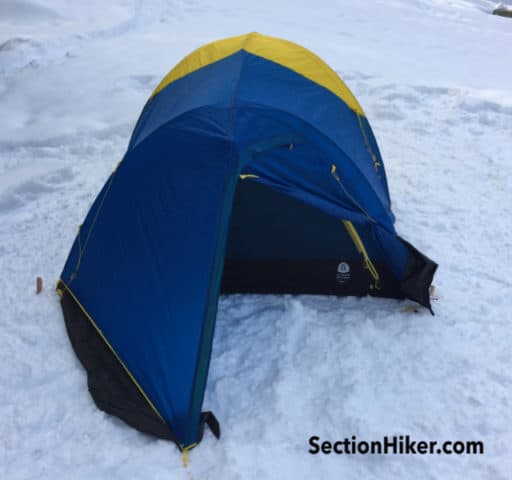
The rear vestibule is smaller than the front vestibule, but provides a second convenient exit point or gear storage area for tent occupants. This vestibule is permanently part of the rain fly and not an optional add-on.
Livability
While the vestibules add a considerable amount of volume and external storage to the Convert 3, the inner tent width is snug for three people. While there is plenty of interior headroom (45″) and enough length in the inner tent for tall people to stretch out (84″), the living compartment is only 69″ wide at the front door, tapering to 59″ wide in the rear. This makes it difficult to use wider 25″ sleeping pads or exit the rear doors at night without disturbing other tent mates. If you only have two people in the Convert 3, it is a palace, but adding a middle third person is a much tighter fit.
That middle person is also at a disadvantage from a storage standpoint. While there are inner pockets for storage of smaller items on the sidewalls of the tent, the middle person doesn’t have any place to put their smaller items. A small gear loft or overhead pocket would be a welcome addition for the person sleeping in the middle of the tent. Winter nights are really long and it’s nice to be able to stash your littles (eyeglasses, phone, kindle, etc) where they are easy to reach and won’t accidentally be crushed.

The front and rear doors of the Convert have a layer of mesh covered by solid fabric panels that can be zippered closed over it. When the fabric panels are unzipped, there’s good airflow through the ends of the tent. But the use of the front vestibule significantly compromises airflow, which can lead to internal condensation in winter, particularly when you have three occupants (exhaling water vapor all night).
Comparable Four Season, 3 Person Tents
| Make / Model | Doors | Weight |
|---|---|---|
| Big Agnes Copper Spur HV 3 Exp | 2 | 5 lb 11 oz |
| Big Agnes Battle Mountain | 2 | 7 lbs 6 oz |
| Hilleberg Kaitum GT | 2 | 9 lbs |
| Marmot Fortess 3 | 2 | 6 lbs |
| NEMO Chogori 3 | 2 | 7 lbs 11 oz |
| Sierra Designs Convert 3 | 2 | 6 lbs 8 oz |
| MSR Access 3 | 2 | 4 lbs 3 oz |
| MSR Remote | 2 | 7 lbs |
Recommendation
The Sierra Designs Convert 3 is a freestanding, double-wall tent designed for four-season use by up to three people. It is lightweight and spacious, with front and rear doors, a permanent rear vestibule, and an optional front vestibule. Set up is easy and the tent packs up surprisingly small, making it easy to backpack into more remote locations. While the tent can house up to three occupants, I think it’s best used by two people who want more space than you normally find in a confining winter tent, or who want to bring a canine companion along. While this review has concentrated on winter use, the Convert 3 will also make a comfortable tent for warmer three-season use without the front vestibule.
Updated November 2022.
Compare 2 Prices
-

 Amazon US$449.96View
Amazon US$449.96ViewAmazon.com Price: $449.96 (as of 04/19/2024 16:38 GMT-0400) Details
Product prices and availability are accurate as of the date/time indicated and are subject to change. Any price and availability information displayed on Amazon.com at the time of purchase will apply to the purchase of this product.
-
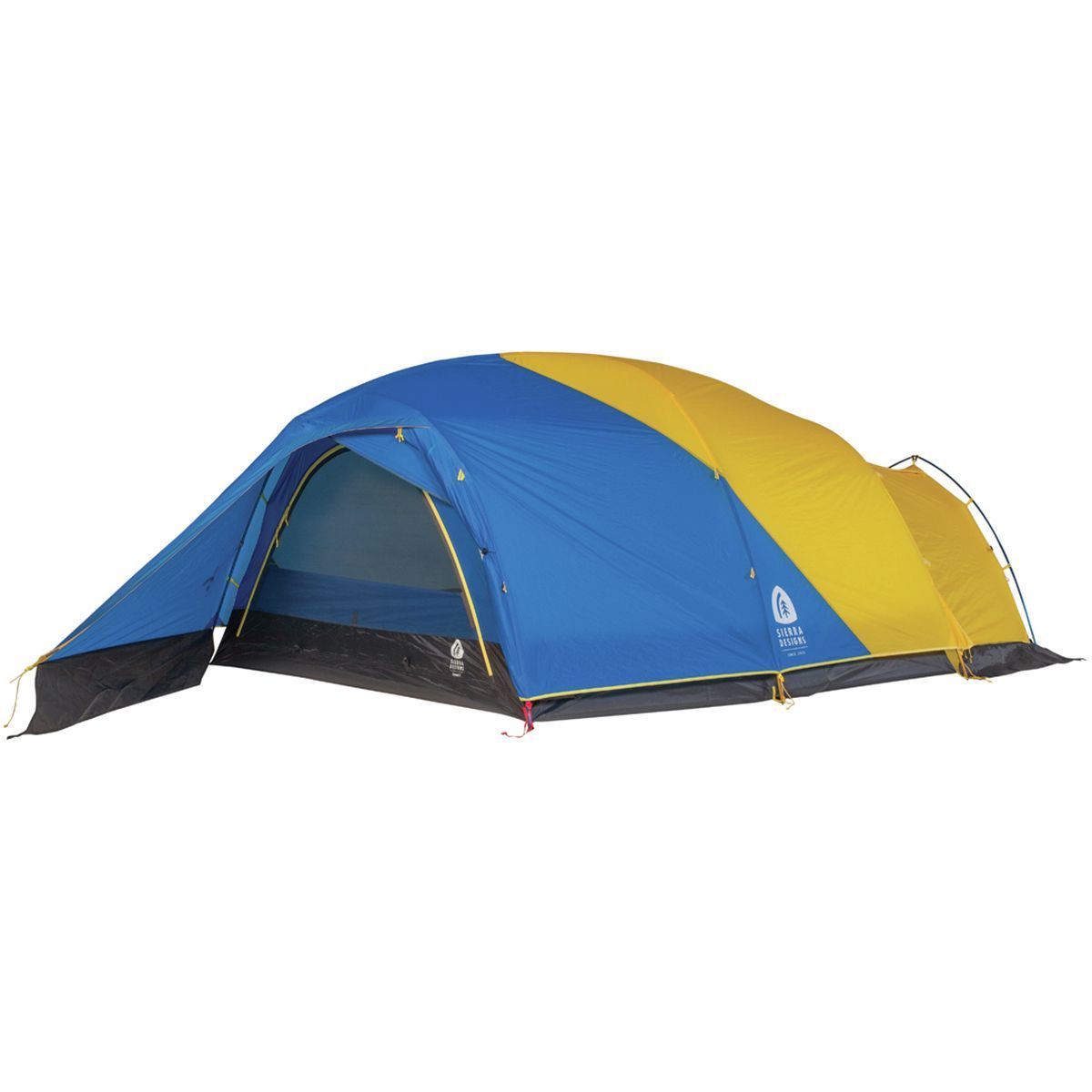
 Backcountry.com
Backcountry.com$599.95$479.96View -

 Backcountry.com
Backcountry.com$599.95$479.96View
Disclosure: Sierra Designs donated a tent for this review.
SectionHiker is reader-supported. We only make money if you purchase a product through our affiliate links. Help us continue to test and write unsponsored and independent gear reviews, beginner FAQs, and free hiking guides. SectionHiker.com Backpacking Gear Reviews and FAQs
SectionHiker.com Backpacking Gear Reviews and FAQs
One question I have. How can it be a freestanding tent if there are five stakes required to pitch the tent, or are the stakes only for true vestibule use? Thanks
There’s one stake required for the rear vestibule. That’s it. If you use the front vestibule you need three more. If you don’t use the rain fly, you need zero stakes.
How does this tent hold up in wind? And is the fly water proof (thinking heavy rain for 3-4 days)?
It’s a 4 season tent….it can take anything you throw at it.
I bought a version of this tent in 2016. It’s an excellent 4-season tent that I use for car camping in all kinds of weather. Great for 1-2 people; 3 would be a squeeze.
I used this tent for an outing to Isle Royale last spring and it was absolutely solid. Held up to weather and wind with no issues. We also used it as a freestanding tent in a shelter one of the nights. More than enough room for 2 plus gear in this tent. It also has interior loops to run cordage through and hang clothes to dry while you sleep!